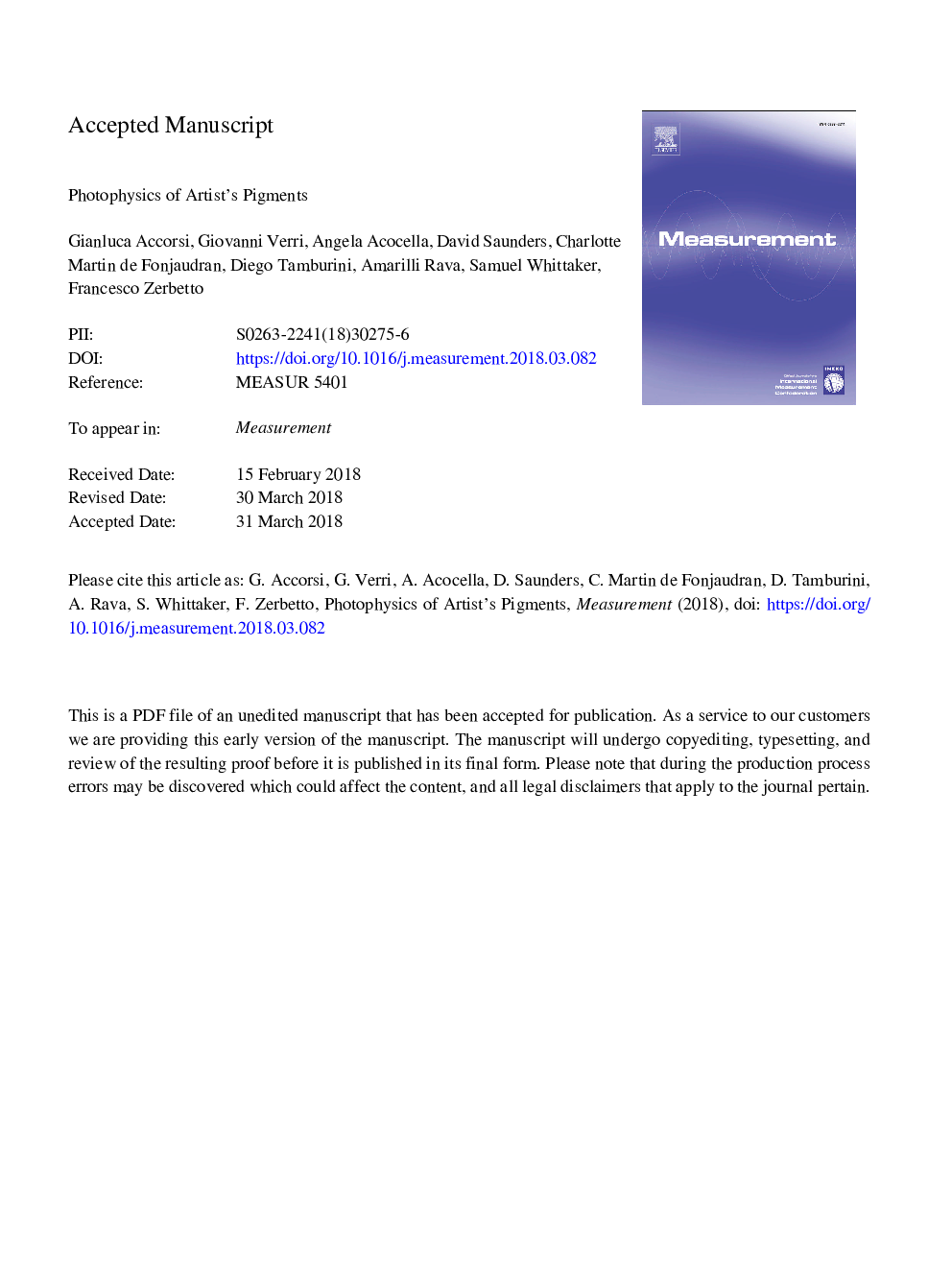| Article ID | Journal | Published Year | Pages | File Type |
|---|---|---|---|---|
| 7121273 | Measurement | 2018 | 8 Pages |
Abstract
Among analytical techniques, photophysics represents a non-invasive method suitable for the study of artefacts in the cultural heritage field. Thanks to this technique, many useful data can be collected on the pigments in order to get information on their identification and aging status. This represents a powerful tool for restores and scholars with the aim of preservation and fruition of artefacts. Here, we report the optical properties of (i) Cuprorivaite (Egyptian Blue) exhibiting an exceptionally high emission quantum efficiency in the near-infrared region (λmaxâ¯=â¯910â¯nm, PLQYâ¯=â¯10.5%) that makes it also appealing for several technological applications; (ii) Manganese blue, a synthetic barium manganate(VI) sulphate compound, used both as a blue pigment in works of art and by conservators in the restoration of paintings and (iii) Indian yellow, a historic pigment produced in India that is characterised by its luminous yellow-orange colour and noticeable photoluminescence properties. The choice of the above-mentioned pigments has been mainly driven by the availability of real case studies in different worldwide regions.
Related Topics
Physical Sciences and Engineering
Engineering
Control and Systems Engineering
Authors
Gianluca Accorsi, Giovanni Verri, Angela Acocella, David Saunders, Charlotte Martin de Fonjaudran, Diego Tamburini, Amarilli Rava, Samuel Whittaker, Francesco Zerbetto,
